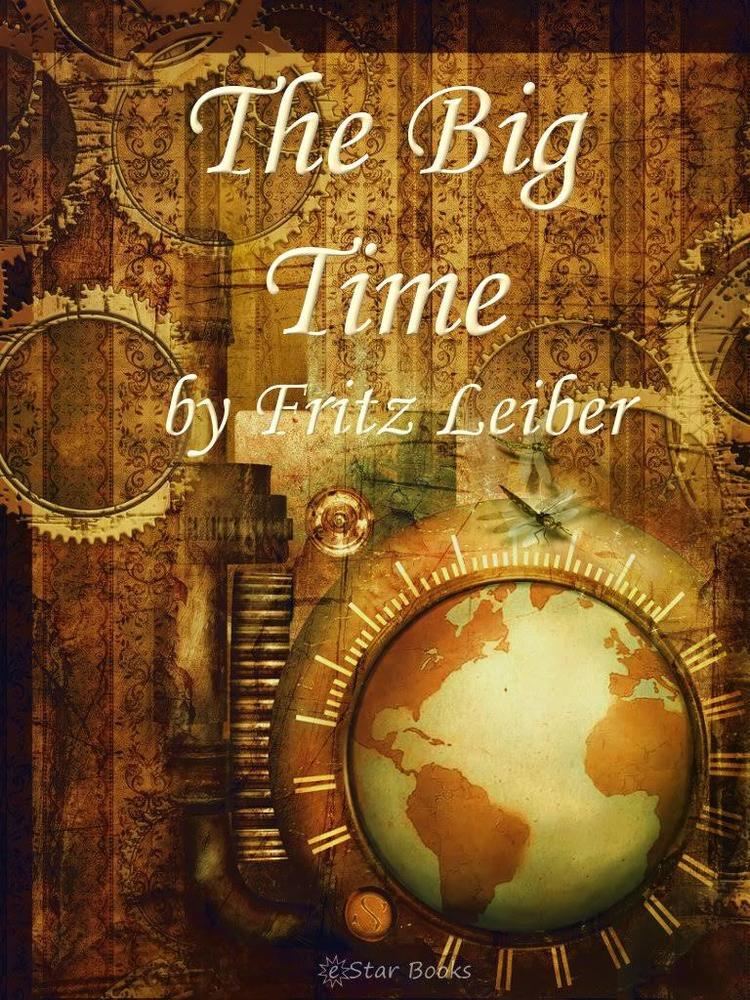6.6 /10 1 Votes
Country United States Originally published March 1958 Genre Science Fiction | 3.3/5 Goodreads Language English Cover artist Ed Emshwiller | |||||||||||||||||||||||||||||||||
 | ||||||||||||||||||||||||||||||||||
Publication date 1958 (as a serial), 1961 (as a novel) Media type Print (hardback & paperback) Awards Hugo Award for Best Novel or Novelette Publishers Ace Books (1961 book edition), Gregg Press (1976 first hardback edition) Similar Works by Fritz Leiber, Science Fiction books | ||||||||||||||||||||||||||||||||||
The big time by fritz leiber 1910 1992 by science fiction audiobooks
The Big Time (1958) is a short science fiction novel by Fritz Leiber. It was awarded the Hugo Award during 1958. The Big Time is a story involving only a few characters, but with a vast, cosmic back story.
Contents
- The big time by fritz leiber 1910 1992 by science fiction audiobooks
- Plot
- Publication
- Reception
- Influences
- References
Plot
The storyline features members of one of two factions, both capable of time travel, engaged in a long-term conflict called "The Change War". Their method of battle involves changing the outcomes of events throughout history (temporal war). The two opposing groups are nicknamed the Spiders and the Snakes after their respective sponsors. The true forms or identities of the Spiders and the Snakes, how those nicknames were chosen, or whether they are in any way descriptive are all unknown.
The narrator of the novel is Greta, a young human female employed at a Recuperation Station where soldiers recover from battles. Greta is an Entertainer: part prostitute, part nurse, part psychotherapist. However, other characters narrate parts of the story in lengthy monologues about their experiences and opinions as they visit the spider-staffed facility.
New soldiers, entertainers, and medical staff are recruited by existing Change War participants from various places and times; characters include: Cretan Amazons, Roman legionnaires, eight-tentacled Lunans (natives of a civilization that thrived on Earth's moon a billion years ago), Hussars, Wehrmacht Landsers, Venusian satyrs (recruited from Venus a billion years in the future), American GIs, Space Commandos. Soldiers from the armies of Alexander the Great, Genghis Khan, Napoleon, and Stalin may find themselves fighting side-by-side or on opposing sides. Likewise, medical staff and entertainers are inducted into the temporal war to provide medical treatment, rest, and relaxation for injured and weary combatants.
Within the context of the story, the Universe as we know it runs on the Little Time. The Change War combatants and their facilities (places such as Field Hospitals, Express Rooms, Recuperation Stations, and Entertainment Spots), located within artificially-created bubbles of spacetime outside of the Universe, run on the Big Time. The Big Time is described metaphorically by the narrator as a train traveling through the Little Time's countryside. Combat operations occur when Soldiers venture into a time and place in the Little Time on orders from their superiors.
Adding to the atmosphere of cynicism about the war's aims and causes is the revelation that one of its effects was to change history and cause an Axis victory in World War II. However devastating this development is to 20th Century humanity, now doomed to live under the world-wide oppressive and genocidal rule of Nazi Germany, in the context of the overall Spider-Snake cosmic conflict, this change was incidental and of only marginal importance.
The first few chapters establish the backstory, setting, amazing futuristic technology and characters. The main plot of the novel involves the discovery of a time bomb in the Recuperation Station, and the attempts to defuse the bomb and identify the saboteur, essentially a locked room mystery within a science fiction context.
Publication
The Big Time was published originally in two parts in Galaxy Magazine's March and April 1958 issues, illustrated by Virgil Finlay. It has many subsequent reprints in book form.
Reception
Algis Budrys praised The Big Time as evidence that Leiber was the only science fiction writer of his generation "who as a matter of course and conviction saw through the mores and circumstances which are now proving nonviable not only in commercial literature but in what we can call life as well." In 2012, it was selected for inclusion in the Library of America's two-volume compilation American Science Fiction: Nine Classic Novels of the 1950s.
Influences
Leiber's short story "Try and change the past", also from 1958, is set in the same universe. It features a New York man just recruited by the Snakes going AWOL and trying to change his personal past in which he was murdered by his wife, finding out that the universe resists all his efforts and "conserving reality" in various improbable ways, and finally not having any choice but going back to fight in the Time War.
During 1965, Poul Anderson developed the same basic theme, a time war fought between two powerful factions who confront each other throughout time and use people of past periods as their soldiers, in the novel The Corridors of Time.
